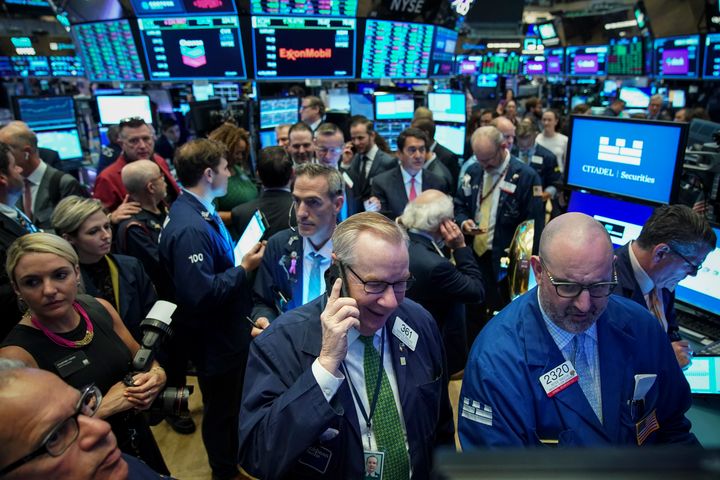
The U.S. created an unexpectedly large number of jobs in June, while Canadian wage growth accelerated sharply, according to reports Friday from the two countries’ statistical bureaus.
Investors reacted to the news by running for cover, dumping stocks and driving down the indexes. Toronto’s S&P TSX index was down 115 points as of 11 am ET Friday, while New York’s Dow Jones Industrial Average fell around 150 points in the first few hours of trading.
So are traders basically now rooting against jobs? Well, not directly, but in effect, yes. Here’s why.
Watch: Wall Street dips after strong jobs report. Story continues below.
Stock markets have become addicted to central bank policy. That is, the thing that moves stock prices more than anything else is what investors expect the U.S. Federal Reserve or the Bank of Canada (or the European Central Bank or the Bank of Japan) to do with interest rates next.
The generally accepted narrative is that it’s good for stocks when interest rates go down, because borrowing costs come down for businesses, so profit margins fatten. And rising interest rates are bad for business.
So now let’s look at the jobs news. The U.S. added 224,000 jobs in June, a solid performance that put to rest some concerns about a fizzling job market. If the U.S. economy is growing strongly, then the odds of a central bank rate cut decrease.
And it’s a rate cut that investors were hoping for, so today’s optimistic report sent stocks tumbling.
Same thing in Canada. June job growth was unimpressive (the country lost a net 2,200 jobs), and the jobless rate rose a notch to 5.5 per cent. But that’s still just 0.1 percentage points above the all-time low, and it follows a stellar run in the first half of this year that increased employment in the country by 248,000 jobs.
Meanwhile, wage growth ― which had been conspicuously absent during this recent job boom ― seems to have made a comeback. According to economists at National Bank Financial, Canadian wages grew at an annual rate of 6.5 per cent in the first half of this year, well above the normal range in recent years.
“Near record low unemployment, accelerating wages, and rebounding economic activity in (the second quarter of this year) do not argue for a BoC rate cut at this time,” NBF economist Matthieu Arseneau wrote in a client note.
And in the view of investors, that’s the problem.
“It will be a bad news is good news thing.”
- J.J. Kinahan, TD Ameritrade
This situation makes for a heck of a mess for everyday investors trying to figure out what constitutes good news or bad news.
“When futures markets have built in an assumption of rate cuts, if economic reports give the opposite view, investors would be in no man’s land,” J.J. Kinahan, chief market strategist at TD Ameritrade, told MarketWatch last month.
He predicted the market will keep looking for bad economic news that will act as “confirmation that the Fed will cut rates. ... It will be a bad news is good news thing.”
Welfare for capital owners
It’s enough to make you miss the good old days, when stock traders made investments based on whether companies had profit potential, and not based on what the central bank is planning to do with interest rates.
But during the Great Recession a decade ago, central banks around the world dropped interest rates to all-time historic lows and started printing money by the billions (in what they euphemistically called “quantitative easing”).
That worked, at least for investors: Company profits started growing again, and stock prices bounced back.
But the result is that traders have come to assume, implicitly, that central bank policy is what drives their investment portfolio. Instead of seeking out the best investments, the most profitable or most visionary companies, they sit back and wait for the Fed to cut interest rates.
It’s hard to even call this capitalism anymore. It’s more like welfare for capital owners, and it’s hard to imagine this trend ending well, for anyone.